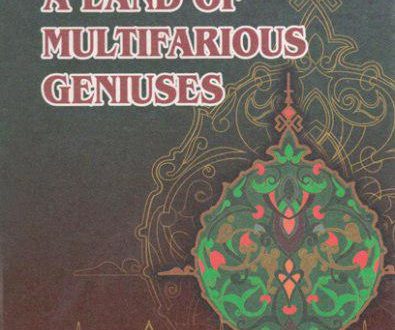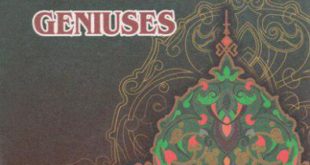Burhan ad-din al-Marghinani studied the Hadiths mentioned by Abu Isa at-Termizi in his book “Al-Jami” from Abu Muhammad Said ibn Asad and al-Hasan ibn Ali al-Marghinani with their additions mentioned in al-Qurashi’s works. Because of his endeavours in this field, he reached a higher level of status than his teachers and masters.
Secondly, his period of life coincided with the first stage of the Eastern period of Renaissance, i.e. 9th-12th centuries when the development of Central Asian society felt a great need for law. The famous book “Hidaya” written by Burhan ad-din al-Marghinani could meet the legal requirements of the time.
Thirdly, the fact that Burhan ad-din al-Marghinani belonged to the legal school of the Hanafian order founded by Imam A’zam Abu Hanifa Nu’man ibn Sabit made a considerable contribution to his winning the highest level of honour and fame. Because in his teachings Abu Hanifa was different from the other three founders of orders as he had paid more attention to the fourth rational (mental) lurce “qias” (comparison) than the previously known three sources ul Shariah (the Qur’an, Sunnah, ijma). In addition, the ancient iiaditions and customs of Muslims served as an additional source in die Hanafian order in the settlement of legal problems.
These factors, especially the fact that the Hanafian order relied on the “ra’y” (personal consideration) and “qias” (comparison) helped and provided Burhan ad-din al-Marghinani with enormous possibilities to improve his knowledge and understand the essence of the Islamic law as well as express his own views and opinions freely in this vast field of knowledge. As the sources inform us, during his studies Burhan ad-din al-Marghinani used to take notes on what he had heard and seen at debates and discussions. However, they did not reach us. He spent his last part of life in Samarkand and in 593/1196-97 died there. As is mentioned by Imam Shami in his book “Radd-ul-mukhtar”, the great lawyer Burhan ad-din al-Marghinani was buried near the graveyard “Turbat-ul-Muhammadiyn” where more than 400 people bearing the name “Muhammad” had been buried.
Though some of the investigators mention that Burhan ad-din
al-Marghinani was buried in Samarkand, a Turkish scholar Shams
ad-din Sami states in his book “Qamusu-l-a’lam” the following
facts: “At the time when Genghis Khan invaded Central Asia, he
(Burhan ad-din al-Marghinani) used to deliver lessons in Bukhara.
The Bukharan inhabitants chose him as a representative of the
local inhabitants to make peace agreements with Genghis Khan.,
However, the conditions of this agree ment were not carried out hm
some people and, in accord with the orders of Genghis Khan, thffl
population of Bukhara was massacred. During this manslaughter
Burhan ad-din al-Marghinani was also killed”. However, we did no!
come across such information in any source.
According to the information provided by Katib Chelebi, Abulhasanat Muhammad Abdulhay Laknavi, some commentators qJ “Hidaya” as well as “Islamic Encyclopaedia” published in TashkelM the following works belong to the pen of Burhan ad-din al-Marghinani:
- “Nashru-l-mazhab”;
- “Kitabu tanasuki-l-khas” (“Manasiku-1 hajj”);
- “Kitab fi-l-faraiz” (on heritage);
- “Al-Tajniysu va-l-maziyd” (A complex of two fatwa (permission);
- “Mukhtaratu-n-navazil” (“Majmuu-n-navazil”);
- “Maziydun fi furu’i-l-hanafian”;
- A commentary on “Al-Jamiu-l-kabir”, the most important work ever written by Imam ash-Shaybani;
- “Bidayatu-l-mubtadi”;
- “Kifayatu-l-muntahi”, a big commentary written for “Bidaya”;
- “Hidaya”, the greatest work on legal matters ever written by
Burhan ad-din al-Marghinani (A mid-level commentary written by
him on “Bidayatu-l-mubtadi”).
“Bidayatu-l-mubtadi” was written by Burhan ad-din al-Marghinani relying mainly on “Al-Mukhtasar” by Abu-l-Hasan ibn Ahmad ibn Muhammad Quduri (known also as al-Qudari) and “Al-Jamiu-s-saghiyr” by Muhammad ibn Hasan ash-Shaybani as a shortened law book for students. He followed the principles used by ash-Shaybani while compiling the book.
 Imom Buxoriy xalqaro ilmiy-tadqiqot markazi bukhari.uz
Imom Buxoriy xalqaro ilmiy-tadqiqot markazi bukhari.uz











